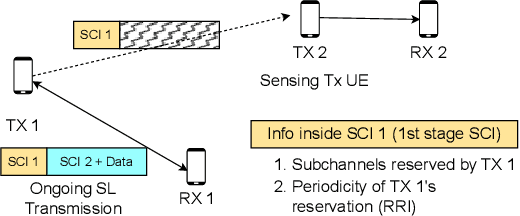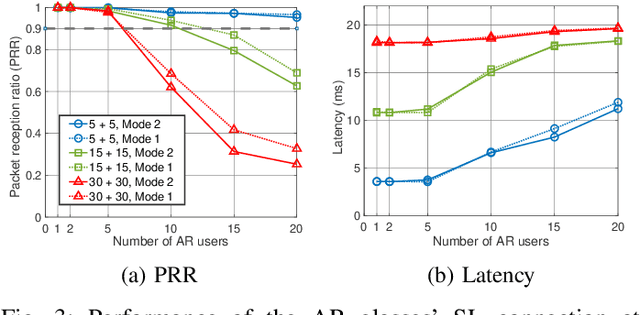Can 5G NR Sidelink communications support wireless augmented reality?
Paper and Code
Oct 03, 2023



Smart glasses that support augmented reality (AR) have the potential to become the consumer's primary medium of connecting to the future internet. For the best quality of user experience, AR glasses must have a small form factor and long battery life, while satisfying the data rate and latency requirements of AR applications. To extend the AR glasses' battery life, the computation and processing involved in AR may be offloaded to a companion device, such as a smartphone, through a wireless connection. Sidelink (SL), i.e., the D2D communication interface of 5G NR, is a potential candidate for this wireless link. In this paper, we use system-level simulations to analyze the feasibility of NR SL for supporting AR. Our simulator incorporates the PHY layer structure and MAC layer resource scheduling of 3GPP SL, standard 3GPP channel models, and MCS configurations. Our results suggest that the current SL standard specifications are insufficient for high-end AR use cases with heavy interaction but can support simpler previews and file transfers. We further propose two enhancements to SL resource allocation, which have the potential to offer significant performance improvements for AR applications.
 Add to Chrome
Add to Chrome Add to Firefox
Add to Firefox Add to Edge
Add to Edge